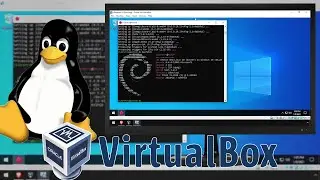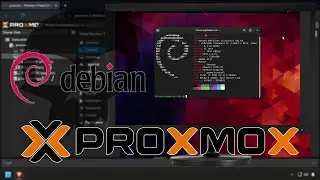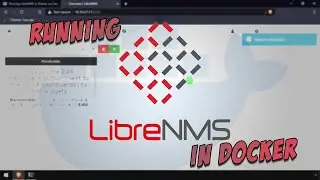Run the Official Debian Rolling Release - Sid - in a Proxmox VE VM
#Debian #Proxmox #Sid
Full steps can be found at https://i12bretro.github.io/tutorials...
--------------------------------------------------------------------
What is Debian Sid?
--------------------------------------------------------------------
Debian Unstable (also known by its codename "Sid") is not strictly a release, but rather a rolling development version of the Debian distribution containing the latest packages that have been introduced into Debian. As with all Debian release names, Sid takes its name from a Toy Story character. In the movie, Sid is the kid next door who breaks his toys and makes nasty creatures of them. - https://wiki.debian.org/DebianUnstable
01. Log into the Proxmox web UI
02. Select a storage from the left navigation pane to download the .iso to
03. Select ISO Images in the left sub-navigation pane
04. If running Proxmox 6, download the Debian Unstable (Sid) https://d-i.debian.org/daily-images/a... and upload it to the Proxmox ISO image library
05. If running Proxmox 7, click Download from URL and paste the download URL from above ≫ Click Query URL ≫ Click Download
06. Right click the Proxmox node name ≫ Create VM
07. Give the VM a unique ID and Name ≫ Next
08. On the OS tab, Select the Debian Sid installation .iso file, leave the Type as Linux and the Version as 5.x - 2.6 Kernel ≫ Next
09. Leave the defaults on the System tab ≫ Next
10. On the Hard Disk tab, set the Disk size to 16 GiB or more ≫ Next
11. On the CPU tab, set Cores to 2 or more and Type to host ≫ Next
12. On the Memory tab, set the Memory to 4096 ≫ Next
13. Leave the defaults on the Network tab ≫ Next
14. Verify the summary and click Finish
15. Right click the Debian Sid VM in the left navigation pane ≫ Start
16. Click console in the left sub-navigation menu
17. When the install dialog displays press Enter to select Install
18. Select a language ≫ Press Enter
19. Select a Location ≫ Press Enter
20. Select a keyboard layout ≫ Press Enter
21. Enter a hostname for the VM ≫ Press Enter
22. Enter a Domain name or leave it empty ≫ Press Enter
23. Choose a mirror location ≫ Press Enter
24. Choose a mirror ≫ Press Enter
25. Set the HTTP proxy if needed ≫ Press Enter
26. Leave the root password empty ≫ Press Enter ≫ Press Enter again to confirm
27. Enter the full name for the new user ≫ Press Enter
28. Enter the username for the new user ≫ Press Enter
29. Enter a password for the new user ≫ Press Enter ≫ Confirm the password ≫ Press Enter
30. Select a timezone ≫ Press Enter
31. Select Guided - user entire disk ≫ Press Enter
32. Select the QEMU HARDDISK ≫ Press Enter
33. Select All files in one partition ≫ Press Enter
34. Select Finish partitioning and write changes to disk ≫ Press Enter
35. Select Yes to confirm writing the changes ≫ Press Enter
36. Select a country to use for the apt mirror ≫ Press Enter
37. Select a mirror from the list ≫ Press Enter
38. Setup a HTTP proxy if necessary ≫ Press Enter
39. Choose if you want to participate in package usage survey ≫ Press Enter
40. Select the optional software to install ≫ Press Enter
41. Wait for Debian Sid to copy and install files
42. Select Yes to install GRUB ≫ Press Enter
43. Select /dev/sda for the boot loader location ≫ Press Enter
44. After the bootloader is installed press Enter to finish the installation and reboot
45. Log in using the username and password created during the installation
46. Welcome to Debian Sid
--------------------------------------------------------------------
Optional Steps
--------------------------------------------------------------------
01. Launch a terminal window
02. Run the following commands
update software repositories
sudo apt update
install qemu guest agent
sudo apt install qemu-guest-agent -y
enable and start the qemu-guest-agent service
sudo systemctl enable qemu-guest-agent --now
03. A subsequent reboot is required to complete the guest agent installation
Documentation: https://wiki.debian.org/DebianUnstable
Connect with me and others ###
★ Discord: / discord
★ Reddit: / i12bretro
★ Twitter: / i12bretro







![Wordle Best Starting Word Revisited [How to Win More]](https://images.videosashka.com/watch/4FY28GWPddI)























